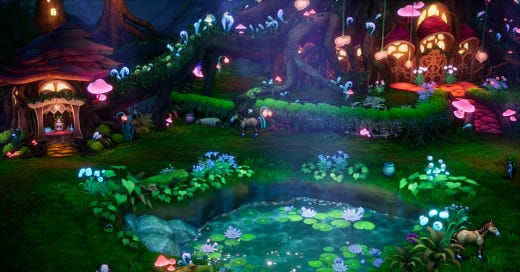Dragon Quest III HD-2D Remake: Pt. 2 Aesthetics
The visuals were the high point of this revived classic. That may not be a good thing.
I don’t have a ton to say about the “HD-2D” art style that this and a few other games have utilized in recent years. I wouldn’t call it tired, but I’ve seen it in enough games now that it’s no longer novel. This doesn’t bring down a game, but there needs to be some imagination to earn points in this area, and the gameplay and storytelling have to be locked in to scratch the surface of immersion as they’re making up for an art direction that can be well-executed but is, at the end of the day, recycled.
Triangle Strategy pulled this off beautifully — it was one of my favorite games in the hitmaking year of 2022. Octopath Traveler seems great (I haven’t played it myself but have heard rave reviews). Not quite the same art style but a similar concept, Sea of Stars is fantastic and I feel that it scores huge points in this category by subverting expectations with its visuals (I’m really excited to talk about this game later on).
As previously mentioned, one of my favorite parts of Dragon Quest III HD-2D Remake was just walking around and exploring the different environments, and this was because of the wonderful job the design team did reimagining these visuals — it is a charming game to look at! In making this game, Masaaki Hayasaka said the key (and probably most challenging) thing they dealt with was scaling up pretty much everything to take advantage of the HD-2D art style and much more powerful Nintendo Switch (the game originally launched on the Famicom in Japan and later on the Nintendo Entertainment System).
What I saw in the part of the game that I did play was impressive — the wide open scapes of the different continents felt sufficiently vast for exploration. In particular, the castles in each major city felt grandiose and varied, putting me in the mood for whatever kingly missives I was about to receive.
The game sounded exactly how you want these HD-2D remakes to, also. While I didn’t grow up playing Dragon Quest games, I recognized and appreciated the newly scored soundtrack providing background for my exploration, battles, conversations, etc. And the iconic blips and bloops of menu navigation, and the battle-victory and “level-up” stings, all popped on the upgraded audio experience. Without being too familiar with the source material, the music and sounds in Dragon Quest III HD-2D Remake were tasteful homages (if not direct lifts) of audio from the original game(s), with slight improvements to appeal to modern audiences. This was the aim for the game as a whole, and I think this category was where it was best achieved.
Reflecting on the sights, sounds, and feel of this Dragon Quest remake leaves me thinking that if the other elements of the game (mainly gameplay) would have clicked, I could have gotten immersed in this cute, pixel-filled world. But this pillar alone does not make for an immersive experience, especially because, like I said, we’ve seen this HD-2D trick before.




